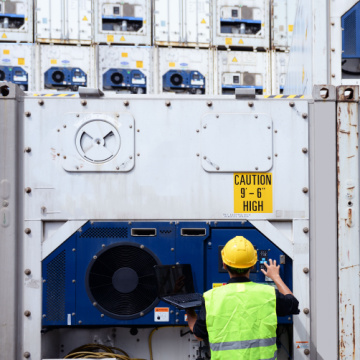Handling perishable or temperature sensitive goods means putting a lot at stake for all involved parties. A remote temperature monitoring system can be used for a wide range of applications including maintaining the ideal levels of temperature and humidity. These systems utilise temperature sensors to calculate how hot or cold a region is and converting the same into readable measurements. In simple words, these systems are resistive temperature detectors capable of converting temperature measurements into readable forms.
How do they work?
The temperature measurement is carried out by the system’s remote monitoring IoT through electrical signals. Two types of metals are found in the temperature sensors and they generate electric voltage or resistance in the event of a change in temperature. The voltage across the diode terminals is critical to the functioning of temperature monitoring systems. Different types of temperature sensors are used based on type of temperature to be measured.
Contact and non-contact are the two primary types of temperature sensors used for temperature measurement. Contact temperature sensors must remain in direct contact with the object. Some common types of contact sensors include Resistance Temperature Detector (RTD), thermistor, thermocouple, and thermometer. On the other hand, non-contact sensors don’t need to be in direct contact with the object and temperature measurement is done through radiation emitted by the energy source. Infrared and thermal imaging sensors are the most common types of non-contact sensors.
Choosing the Right System:
Many industrial processes are incomplete without an effective temperature monitoring system. However, it must be remembered that all temperature measurement devices are not similar. Therefore, it is important to be extremely careful while selecting these systems. If the most critical system features are not taken into account during selection, a temperature monitoring system is likely to fail miserably.
Mentioned below are some of the most important factors to consider while choosing your temperature monitoring system.
- Ability to sense environmental alarms: The monitoring system chosen by you must be able to monitor all environmental parameters that can pose a threat to your network equipment. Water leakage can cause serious damage to a temperature sensor and therefore, the most appropriate sensor is the one that sends alerts in case there is any water accumulation. High moisture content in the air is another concern for these systems. This can cause the equipment to degrade or rust, eventually resulting in short circuit. Therefore, it makes sense to opt for systems that can notify users about the humidity. Finally, airflow disruptions can also have serious consequences on your equipment. Systems equipped with airflow sensors can warn users about airflow pressures that may harm the device.
- Integrated Support: Integrated support is an essential feature that helps manage the entire network without having to check multiple screens continuously. While using an integrated system, users are notified if there is any problem or abnormality.
At ShockWatch, we have the most advanced range of temperature monitoring systems that have been used extensively for handling temperature sensitive products. Please contact us today to discuss your temperature monitoring requirements.


